Common Name(s): Honduran mahogany, genuine mahogany, big-leaf mahogany, Brazilian mahogany, American mahogany
Scientific Name: Swietenia macrophylla
Distribution: From Southern Mexico to central South America; also commonly grown on plantations
Tree Size: 150–200 ft (40–60 m) tall,
3–6 ft (1–2 m) trunk diameter
Average Dried Weight:AVERAGE DRIED WEIGHT
Density is the measurement of a wood’s weight per unit volume. Here, "dried weight" specifically refers to wood at 12% moisture content, and values are given in pounds per cubic foot and kilograms per cubic meter. Also keep in mind that density commonly varies by +/- 10% from the average.
Click on the link "Average Dried Weight" for more details. 36.8 lbs/ft3 (590 kg/m3) Low WEIGHT TIERS
Extremely Low: 0+ kg/m3
Very Low: 420+ kg/m3
Low: 520+ kg/m3
Medium-Low: 620+ kg/m3
Medium: 730+ kg/m3
Medium-High: 840+ kg/m3
High: 960+ kg/m3
Very High: 1,080+ kg/m3
Extremely High: 1,200+ kg/m3
Tiers are based on CSIRO provisional strength groupings (SD1-SD8) based on density.
Janka Hardness:JANKA HARDNESS
This test measures a wood’s resistance to indentation, and is the pounds of force (or Newtons) required to embed a .444" (11.28 mm) diameter steel ball halfway into the wood. Values are for side grain, measured at 12% MC.
Click on the link "Janka Hardness" for more details. 900 lbf (4,020 N) Low JANKA HARDNESS TIERS
Extremely Low: 0+ N
Very Low: 2,050+ N
Low: 3,150+ N
Medium-Low: 4,480+ N
Medium: 6,280+ N
Medium-High: 8,380+ N
High: 11,080+ N
Very High: 14,000+ N
Extremely High: 17,450+ N
Tiers are derived from CSIRO provisional strength classifications (SD1-SD8) in conjunction with the USDA's estimated hardness based on density.
Modulus of Rupture:MODULUS OF RUPTURE
Sometimes called bending strength, this test measures a wood’s strength before breaking (i.e., rupturing). Values are given in pounds of force per square inch and megapascals, measured at 12% MC.
Click on the link "Modulus of Rupture" for more details. 11,710 lbf/in2 (80.8 MPa) Medium MOR TIERS
Extremely Low: 0+ MPa
Very Low: 45+ MPa
Low: 55+ MPa
Medium-Low: 65+ MPa
Medium: 78+ MPa
Medium-High: 94+ MPa
High: 110+ MPa
Very High: 130+ MPa
Extremely High: 150+ MPa
Tiers are based on CSIRO strength classifications (SD1-SD8).
Elastic Modulus:MODULUS OF ELASTICITY
This test measures the wood’s level of deformation when under a given load. Higher values indicate less deformation (i.e., stiffer). Values are given in pounds of force per square inch and gigapascals, measured at 12% MC.
Click on the link "Elastic Modulus" for more details. 1,458,000 lbf/in2 (10.06 GPa) Low MOE TIERS
Extremely Low: 0+ GPa
Very Low: 7.9+ GPa
Low: 9.1+ GPa
Medium-Low: 10.5+ GPa
Medium: 12.5+ GPa
Medium-High: 14.0+ GPa
High: 16.0+ GPa
Very High: 18.5+ GPa
Extremely High: 21.5+ GPa
Tiers are based on CSIRO strength classifications (SD1-SD8).
Crushing Strength:CRUSHING STRENGTH
Also called compression strength, this test measures the maximum stress sustained before failure. Force is applied parallel to the grain (producing stress akin to chair legs). Values are given in pounds of force per square inch and megapascals, measured at 12% MC.
Click on the link "Crushing Strength" for more details. 6,760 lbf/in2 (46.6 MPa) Medium-Low CRUSHING STRENGTH TIERS
Extremely Low: 0+ MPa
Very Low: 30+ MPa
Low: 36+ MPa
Medium-Low: 41+ MPa
Medium: 47+ MPa
Medium-High: 54+ MPa
High: 61+ MPa
Very High: 70+ MPa
Extremely High: 80+ MPa
Tiers are based on CSIRO strength classifications (SD1-SD8).
Shrinkage:SHRINKAGE
These values represent the percentage change in radial and tangential faces of the wood—as well as the total (volumetric) shrinkage—as the moisture content goes from green (maximum) down to oven-dry (minimum), approximating the wood's stability with changes in humidity. T/R ratio helps to estimate the uniformity of the shrinkage across different wood faces.
Click on the link "Shrinkage" for more details. Radial: 2.9%, Tangential: 4.3% Low SHRINKAGE TIERS
Very Low: 0%+
Low: 3.6%+
Medium: 5.1%+
High: 6.6%+
Very High: 8.1%+
Tiers are based on tangential shrinkage (green to oven-dry) from CSIRO shrinkage classifications (1-5).
Volumetric: 7.5%, T/R Ratio: 1.5
Color/Appearance: Heartwood color can vary a fair amount, from a pale pinkish brown to a darker reddish brown. Color tends to darken with age. Mahogany also exhibits an optical phenomenon known as chatoyancy.
Grain/Texture: Grain can be straight, interlocked, irregular or wavy. Texture is medium and uniform, with moderate natural luster.
Rot Resistance: Varies from moderately durable to very durable depending on density and growing conditions of the tree. (Older, wild-grown trees tend to produce darker, heavier, and more durable lumber, while plantation-grown stock can be lighter in weight, paler in color, and slightly less rot resistant.) Heartwood is generally resistant to termites, but vulnerable to other insects.
Workability: Typically very easy to work with both hand and machine tools. (With exception to sections with figured or irregular grain, which can tearout or chip during machining.) Slight dulling of cutters can occur. Sands very easily. Turns, glues, stains, and finishes well.
Odor: No characteristic odor.
Allergies/Toxicity: Although severe reactions are quite uncommon, Honduran mahogany has been reported as a sensitizer. Usually most common reactions simply include eye, skin and respiratory irritation, as well as less common effects, such as boils, asthma-like symptoms, nausea, giddiness, and hypersensitivity pneumonitis. See the articles Wood Allergies and Toxicity and Wood Dust Safety for more information.
Pricing/Availability: Despite export restrictions, Honduran mahogany continues to be available in lumber or veneer form, ideally from plantations. (Though because of CITES restrictions, most US-based retailers are unable to ship the wood internationally.) Prices are in the mid range for an imported hardwood, though the wood tends to be more expensive than African mahogany (Khaya spp.). Figured or quartersawn lumber is also more expensive.
Sustainability: This wood species is in CITES Appendix II, and is on the IUCN Red List. It is listed as endangered due to a population reduction of over 60% in the past three generations (180 years), caused by a decline in its natural range, and exploitation. Although a lot of mahogany today is plantation-grown (with wild supplies more or less exhausted in the northern parts of its range), there still exists “heavy harvest pressure” on wild trees in the southern areas of its range—particularly Brazil and Bolivia.[1]Barstow, M. & Negrão, R. 2023. Swietenia macrophylla. The IUCN Red List of Threatened Species 2023. Accessed on 23 June 2025.
Common Uses: Furniture, cabinetry, turned objects, veneer, musical instruments, boatbuilding, and carving.
Comments: Swietenia macrophylla goes by many common names, yet perhaps its most exclusive name is “genuine mahogany”—a name meant to distinguish it not only from unrelated Asian species (such as those in the Shorea genus that are sometimes called Philippine mahogany), but also the more closely-related Khaya species from Africa. These levels of distinctions are explored in more detail in the article Mahogany Mixups.
Honduran mahogany’s easy workability, combined with its beauty and phenomenal stability have made this lumber an enduring favorite. It’s an incredibly important commercial timber in Latin America, where it’s now grown extensively on plantations.
Images: Drag the slider up/down to toggle between raw and finished wood.
Note the second sample of an older (and darker colored) sample originally from the collection of J.L. Stearns, a very active wood collector in the 1940s and 1950s.
Note also the sample of Swietenia krukovii pictured for reference. At the time of its discovery in Brazil in the 1930s, it was believed to be a completely new, smaller-leaved species of mahogany.[2]Gleason, H. A., & Panshin, A. J. (1936). Swietenia Krukovii: a new species of mahogany from Brazil. American Journal of Botany, 23(1), 21-26. However, this species, along with a handful of others (S. belizensis, S. candollei, and S. tessmannii) have all since been shown to be synonyms of S. macrophylla.
A special thanks to Steve Earis for providing the turned photo of Honduran mahogany.
Identification: See the article on Hardwood Anatomy for definitions of end grain features.
Porosity:POROSITY
Specifies the overall pore structure (ring-porous, semi-ring-porous, or diffuse porous), and notes if annual growth rings may still be seen even for diffuse porous hardwoods.
Click on the link “Porosity” for more details. diffuse porous; growth rings usually distinct due to marginal parenchyma bands
Arrangement:ARRANGEMENT
Describes the more individual pore arrangements found throughout the end grain surface, such as solitary, multiples, chains, clusters, etc.
Click on the link “Arrangement” for more details. solitary and radial multiples
Vessels:VESSELS
Describes the relative size and frequency of the pores (vessels), as well as any contents found in the pores, such as tyloses, colored mineral deposits, etc.
Click on the link “Vessels” for more details. large, few; reddish brown deposits occasionally present
Parenchyma:PARENCHYMA
Describes the pattern(s) of the parenchyma cells seen on the endgrain, such as vasicentric, aliform (winged or lozenge), confluent, and banded.
Click on the link “Parenchyma” for more details. vasicentric, banded (marginal)
Rays:RAYS
Describes the relative width and frequency of the rays (appearing as thin vertical lines on the endgrain), as well as a note on if these rays are visible with/without magnification.
Click on the link “Rays” for more details. medium width, normal spacing; most rays are generally not visible without magnification
Lookalikes/Substitutes: Khaya species (known commercially as African mahogany) are the closest in both appearance and anatomy. Swietenia species usually have marginal parenchyma bands, while Khaya species typically lack such bands. See the article Mahogany Mixups for more info.
Notes: Ripple marks present on flatsawn surfaces.
(Species)
(Authority)
Related Content:
References[+]
| ↑1 | Barstow, M. & Negrão, R. 2023. Swietenia macrophylla. The IUCN Red List of Threatened Species 2023. Accessed on 23 June 2025. |
|---|---|
| ↑2 | Gleason, H. A., & Panshin, A. J. (1936). Swietenia Krukovii: a new species of mahogany from Brazil. American Journal of Botany, 23(1), 21-26. |

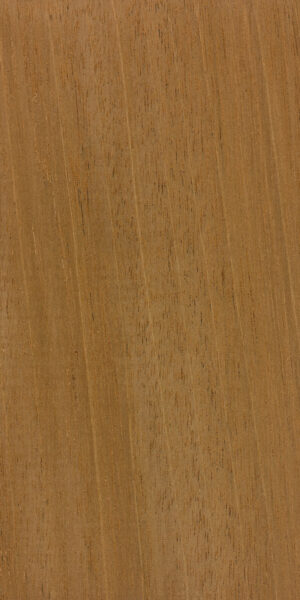
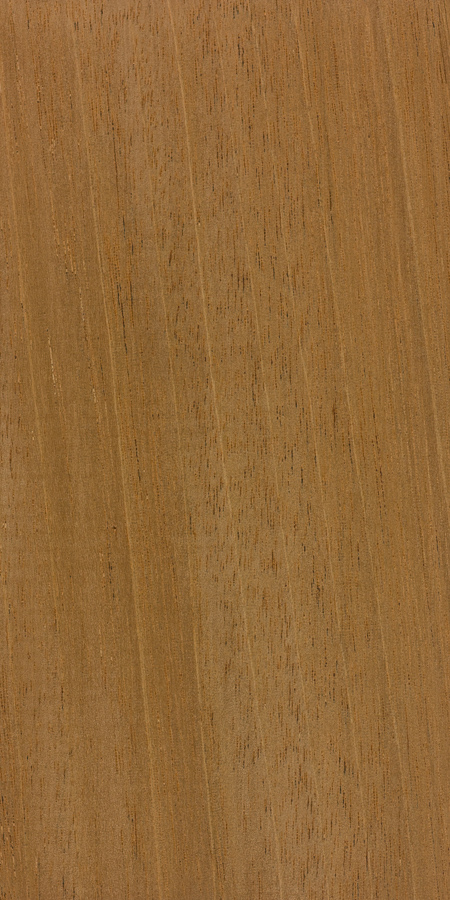
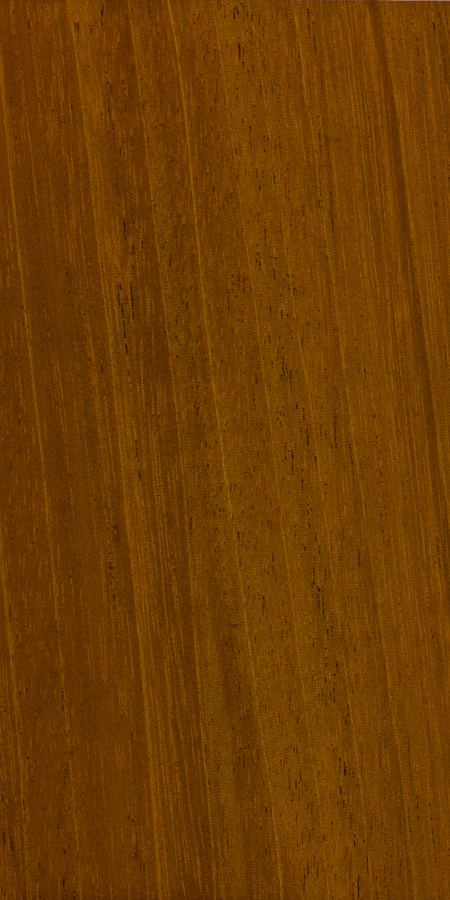
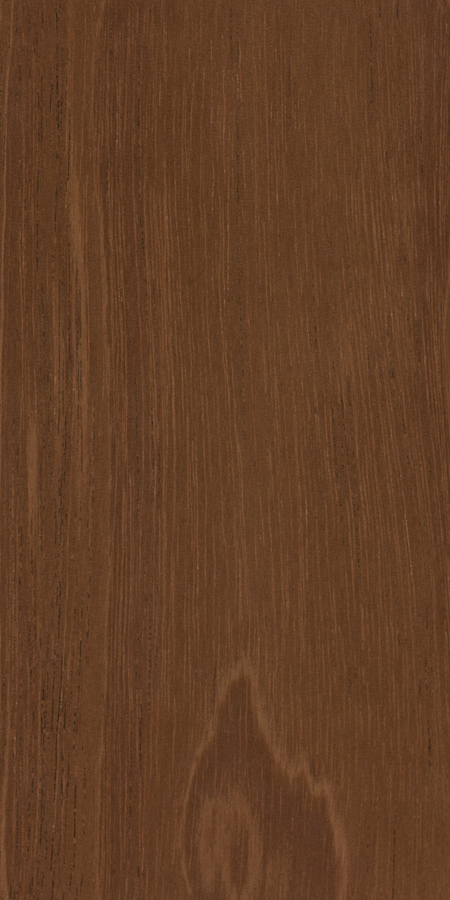
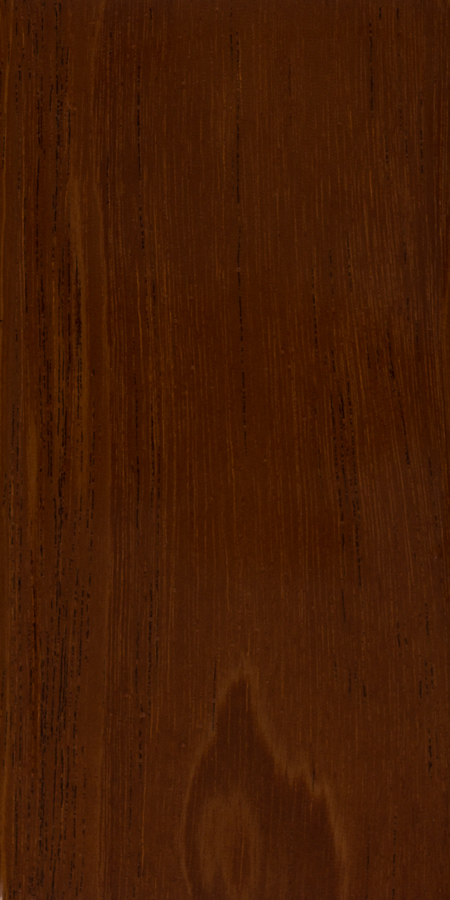
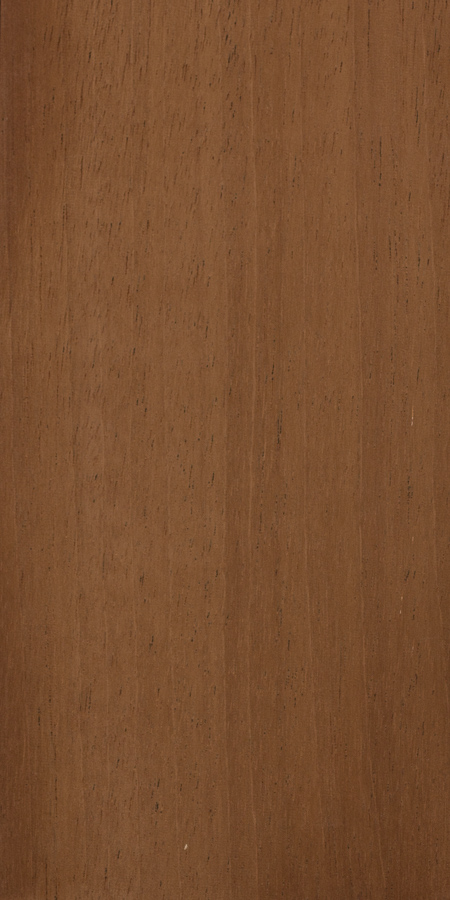




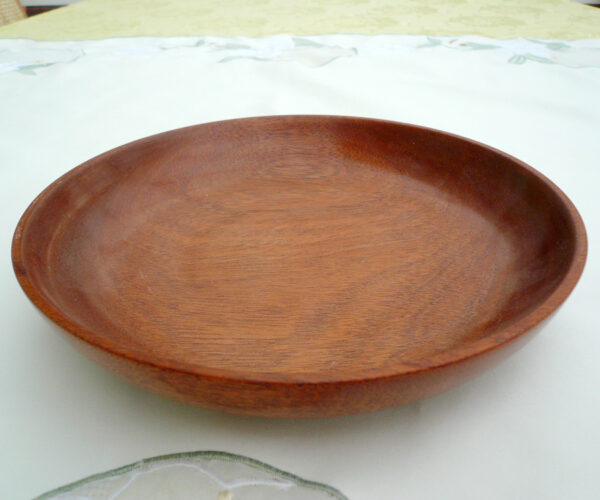
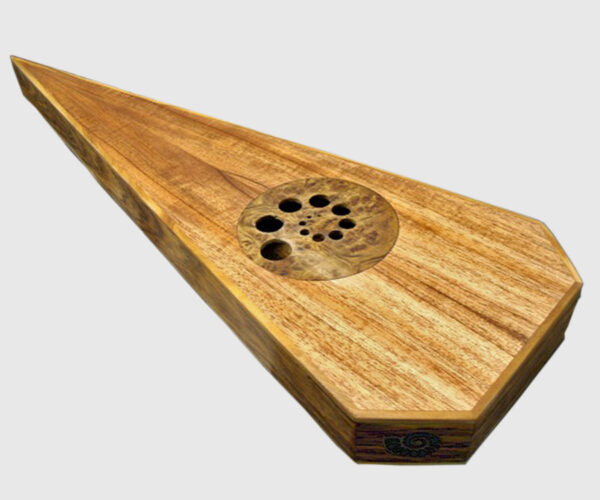
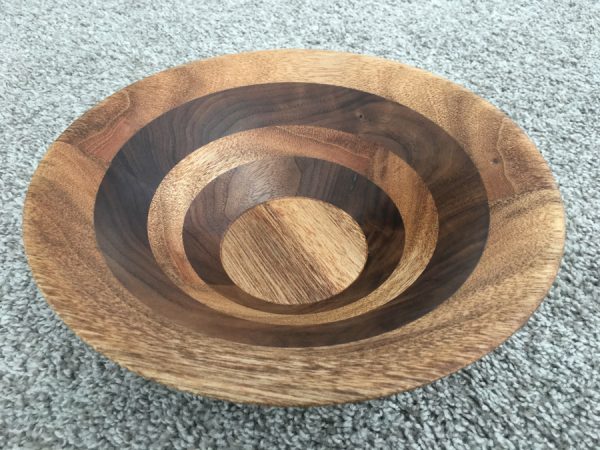
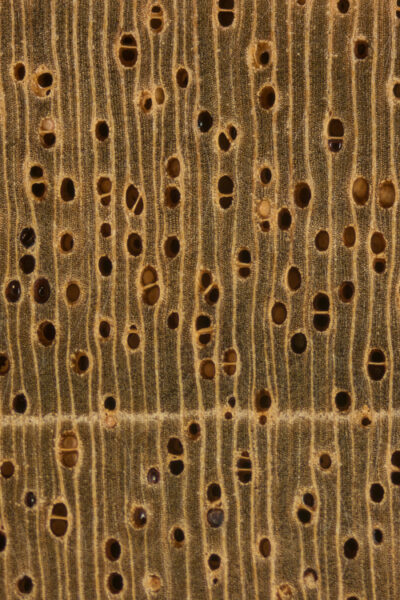

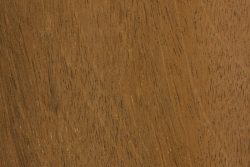
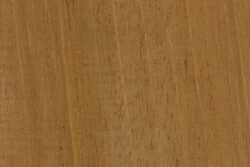
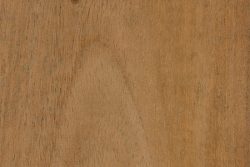
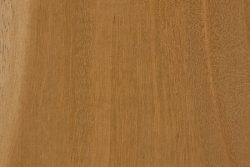
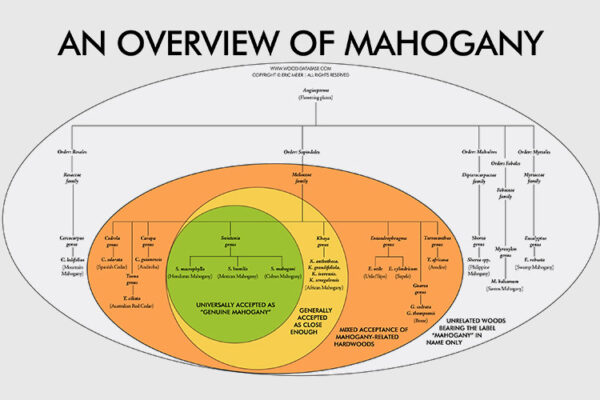
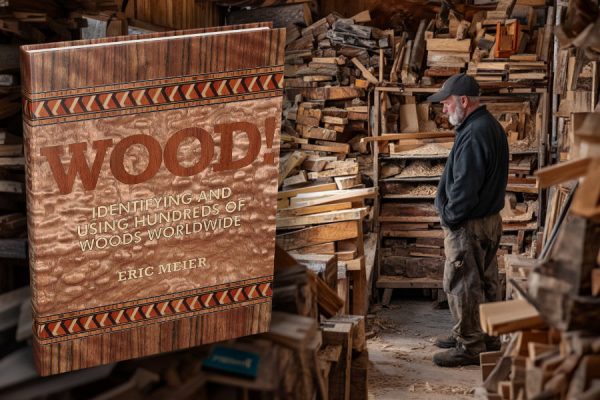
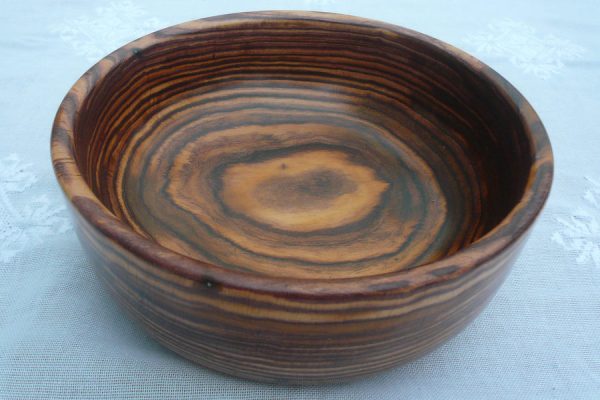
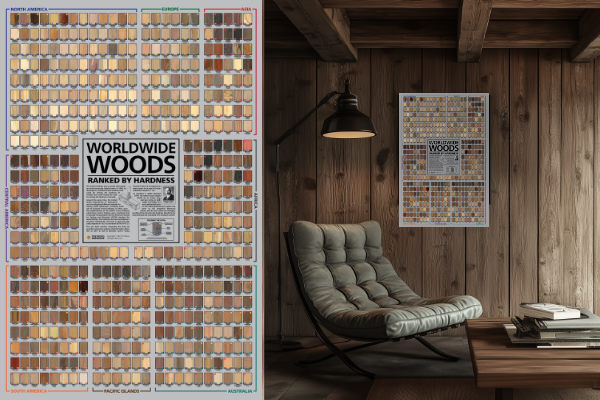
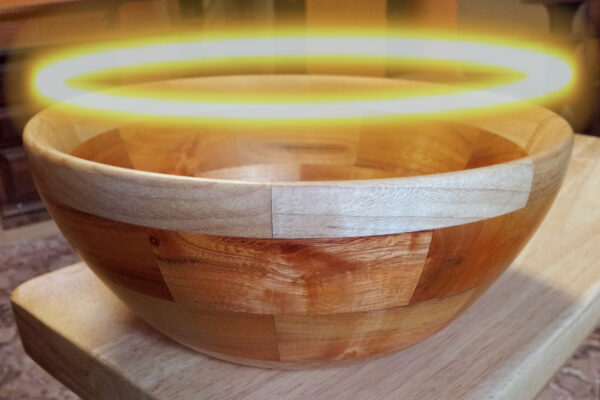
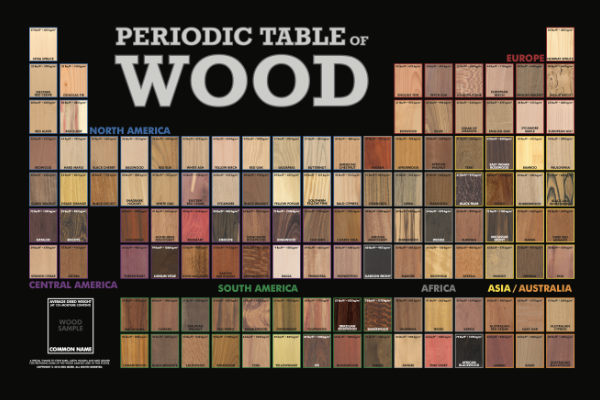

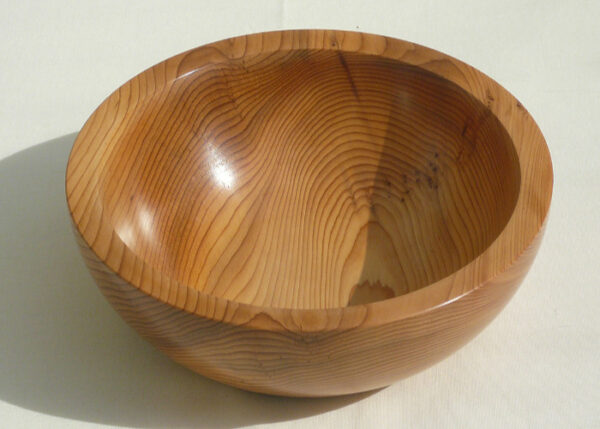
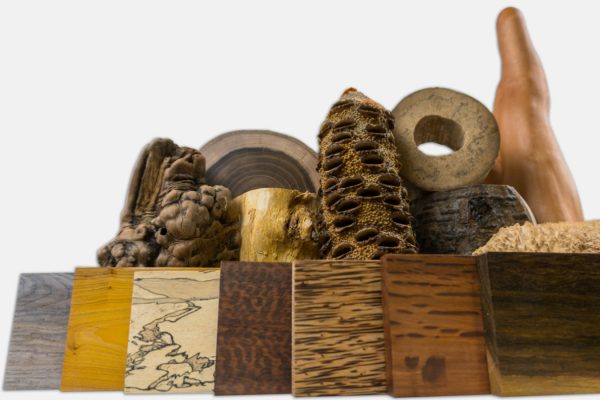
Hello. Please help identify?
Thank you.
Hello. Does anyone know these types of woods?
Thank you
Hello. Can anyone assist in identifying any of these woods?
Thank you
Hello. Can anyone assist in identifying any of these woods?
Thank you.
Hello, I want to know if it is Honduran mahogany, it is a Fender brand guitar body from a mod shop (not to be confused with a custom shop which is more expensive) year 2021. It has not reached my hands yet but I have these photos, so far.
Hello to this forum. Can someone PLEASE help me identify this type of wood?
Thank you, much.
Sorry, George. That gorgeous stuff could be any of several timber species. Find a thicker piece, polish the end grain and examine under a loupe, macro lens, or microscope. The anatomy can both eliminate many candidates and help you properly identify it
Thank YOU for at least giving a proposal on what to do. I will do and post photo.
Hello to this forum. Can anyone PLEASE help me identify this type of wood?
Thank you, much.
Hi Erik,
With dish soap on a rag cleaned this unknown original condition board. Have two. Please identify think it is teak or mahogany. Thanks brought it back with me when stationed on Guam in 1985
I’d guess it’s neither teak or mahogany. Possibly something like Albizia species.
Nice!
Hi, Eric, I found a piece of interesting wood at a shop that was liquidating a deceased friend’s woodshop, and it was in a pile of mahogany but looks quite different. The grain looks particularly well-quilted for the wood, but other characteristics seem to match. Not fully understanding how to ID parenchyma, I attached the best photos I could get at the moment of the end grain. Does this look like a possible match for this genus?
Surface is a bit too rough to make out clear enough details. Also, an overall pic of the face grain would be helpful as well.
Hopefully these are better
Okay, I can see the marginal parenchyma bands in that last picture, which would strongly point to this being genuine mahogany.
Thank you! Sorry it took so many pics. I appreciate you helping me on this
Here are a couple more one board is much darker red
The endgrain isn’t clear enough or finely sanded enough to make out enough detail.
I recently inherited my grandfathers home and going through his stacks of lumber I came across a bunch of 8/4 mahogany from Honduras. This would had been on racks for as long back as I can remember and if I had to guess age I would say 1950-60’s. My question is do you believe this is genuine mahogany?
The images seemed to have become unattached to your comment. However, to me it looks closer to African mahogany, at least from first glance. Is it possible to get the endgrain cleaned up a bit better and get a better image of that? It will be critical to see the endgrain and check for marginal parenchyma in order to see if it is Honduran or African type mahogany.
Hello, I stumbled upon some planks of 70 years old mahogany and would be very appreciative if you could verify for me that this wood is honduran mahogany as i suspect, and would make an excellent acoustic guitar. The wood is a lot darker than the pictures i see but it is also very old and in the article it is supposed to get darker and redder with age. In phot no 1 the wood is wet. Thanks in advance.
It does appear to be a good quality mahogany. Though the ribbon striping on the quartered surface is seen a little more often on African mahogany rather than Honduran, so it’s hard to say. You’d need to get a good clean closeup shot of the endgrain and check for marginal parenchyma bands to be more sure on the ID with this one.
I would so appreciate if you could tell me about this wood. It’s a solid piece on top of a dresser I got for a song at the thrift store. It was broken, neglected, grungy. I cleaned it up and sanded the top, just in case… I didn’t recognize the wood grain at all, being a New England girl. But then I found your site and eureka! I think it’s good mahogany, flat-sawn if I understand your info. I’d love your expert take on it! Many thanks for this helpful site. These are 1- the raw wood, 2- after I’ve… Read more »
Definitely a nice wood top. Do you have a shot of the endgrain by chance? It can be tricky to get in finished pieces, but looking at the endgrain would help to distinguish it from African mahogany, which can look really similar.
Thanks so much. Here’s the photo of the end. As you say, it’s the finished top of this antique dresser, so I hope it helps. Someone in an online group today “yelled” at me, saying it’s an Eastlake piece and made of walnut. I just don’t know enough to know! :) Thanks for your help, and for not yelling at people haha.
Thanks, I believe I can just make out what appear to be marginal parenchyma bands in the wood, which would suggest genuine mahogany in the Swietenia genus.
Great site, much appreciated! I still can’t decide if an old table I’ve sawn into planks is Cuban or Honduran Mahogany, but at least with your help I got it down to a choice between those two :-)
Hi, congratulations for the work you have done with the site and with the videos, I am getting closer to the world of wood. Can you help me by telling me if this is a genuine mahogany, [/ img] [/ url]
[/ img] [/ url]
thank you
regards
Gilberto
I realize this is an old article, but I was wondering if someone can confirm this wood for me. At first I was under the impression it was walnut, but a friend of mine assured me it was not. After looking into it more, I think it might just be mahogany as he was suggesting. Here is the best macro of the end grain I could get, sorry the focus is off a little.
To me, that dark color looks a lot closer to walnut. The pore arrangement is sort of in an ambiguous gray area, but their distribution looks a bit closer to walnut as well, with some annual rings having a lower concentration of pores toward the end of the growing season.
When you mentioned the color, I checked the color balance on my camera and it had been set wrong for the lighting I was working with. I corrected the setting, and retaken the image, along with a face grain shot. I do see what you are saying about the pore arrangement. Just for some background on where I got this piece of wood. I was dropping some junk off at a county landfill and noticed some wood that looked about the size for panel inserts for raised panel doors. I picked up some maple, cherry, and this piece that I… Read more »
The face grain in the last picture, with its short and small rays scattered among the pores looks a lot more like mahogany, and doesn’t resemble walnut. I think walnut can safely be ruled out. But the endgrain is sort of unusual for mahogany, and it may be something else entirely. Some of the pores have dark colored deposits in them, which I’ve not seen in mahogany before.
Ok, so looking for more characteristics to help with the ID…I did a calculation on a sample piece and it comes out to roughly 55 lbs/ft3. That appears to be too dense for mahogany. Using that to filter the woods you have listed, it seems to look similar to black mesquite.
One final picture. This is the backside of a cribbage board I made from this wood. For color reference, it has a cherry slide and is sitting on a piece of maple. The cherry and the board have had a clear wipe on poly applied as a finish.
Is this the same wood as your previous photos? Superficially, I agree from some angles it can appear similar to black mesquite, but the endgrain simply doesn’t match. Mesquite has almost always has extensive vasicentric parenchyma present, and your samples lack that.
There is a lot of density variation in mahogany since it is grown in so many places and growing conditions. I have definitely seen and worked with genuine mahogany that is as dark and dense as your sample, so I wouldn’t rule out the possibility.
Yes, the most recent photo I provided was from the same original piece as the earlier photos. So, for lack of a better option, I’ll refer to this as a piece of mahogany. Thanks for your time.
I am a guitar builder and have a client in Japan who wants a guitar built using Honduran Mahogany. I’m worried about the legality of shipping the guitar to him. Can this wood be exported from the U.S.?
Hi, im having a hard time thisb table. I’ve been told it’s Genuine/Honduran Mahogany. I really would just like something concrete. That I could say. I’ve gotten more questions than answers.
I would need to see a much clearer shot of the endgrain to have a chance at ID. Try to take off a very light pass with a miter saw (not even using the full kerf of the blade) and/or sand it up to about 200-400 grit and repost pic.
Hey there. Would anyone help me identify the type of wood this board is? Here is the endgrain. Thank you.
The section on the far right reminds me of black walnut. Where does this wood come from? How heavy is it? Any noticeable scent? Can you get a picture of the face grain?
I’m told this was part of a butcher block counter top. Fairly heavy, definitely hardwood. The fresh cut endgrain smells like vinegar or acidic. Thank you.
Not sure how to classify odors, but it does resemble black walnut on both face and endgrain.
Thanks Eric!!!
What type of wood do you think this might be? I sanded it but It does have some red stain in the grain. It is an antique side table and very heavy hard wood.
I can’t make out enough of the endgrain details to get a good enough look. Most important, I can’t tell if those horizontal lines on the endgrain are just bands of parencyhma, or actually rows of pores, which would make a very big difference in possible ID. Also, that face grain image looks strange, I’m not sure why the pores appear to be in those little clusters like that. Can you get another shot from slightly further out, or possibly from a different location?
Thank you for your response! I added some more photos and I can’t seem to get clear magnified pics but I added them anyway. Fyi this is a table purchased in Ontario Canada. The pic of the drawer is the original colour the others I sanded a little by hand. Not sure if these pics will help.
You’ve got me stumped, I don’t know. Superficially, the face grain resembles a diffuse porous tropical hardwood like Albizia, but the endgrain doesn’t really match.
Based on accounts of several wood worker here in the Philippines, mahogany doesn’t seem to be that stable (it shrink, expands and splits frequently)- I think the reason behind it is that most of the mahogany lumber being sold here are harvested from immature trees (10-15 years old). I think the best plantation mahogany lumber can be sourced from the old reforestation project of the government (I once hiked in the Permanent Forest Laboratory Areas of Mt Makiling National Park and I noticed that the lower slope of the mountain is dominated by these gigantic, old invasive species (most mahogany… Read more »
Hello, i wish to know what kind of mahogany do we have here in our farm! The owner says that it is Honduran Mahogany, but i dont know. I posted a picture to help
Is this wood (in the photo) also Mahogany? From Honduras?
I can’t tell from the picture, can you get an image of the endgrain?
Here are the photos.
Hi, here are a couple of photos of what I think is Honduran mahogany. Would you agree? The board is 146″ long and 34″ wide. It was probably milled about 40 years ago, perhaps even earlier. It came for a lumber yard in Pennsylvania which closed for business in 1994 and auctioned all of its lumber. The photos show the board right after it was hand-planed. The ends of the board are painted with red paint and a 1/8″ thick strip had been stapled to prevent splitting. Well, the board split anyway. Boards of this size (and age) are probably… Read more »
No pics are attached
I refinish and restore antique furniture. And find that there is a lot very beautiful mahogany prices from the 1800’s. Restored and with a new finish this wood out standing.
Hello, I need an expert to help identifying what type of mahogany I have and will be happy to send pictures. I’m thinking these planks and other boards are Genuine/Honduras mahogany. In 2014 I found the wood stored in an under house garage, the owner told me its been sitting there for at least 30 years. Then as we talked more she told me her husband actually picked it all up 30 years prior when his university was replacing the chapels organ, he was a professor there. Knowing of university I did an internet search of it’s history and found… Read more »
Chances are it will be genuine mahogany if it is indeed a type of mahogany. Given the age, it may be Cuban mahogany. Pictures would help.
Could you give the name of the university in order to learn about the organ that was replaced?
Hi there Craig what a amazing story and great research. i build stuff from timber with a identifiable past life extending its use on for another generation. how great would it be for you to do the same thing. im sure you got some think special in mind for it.
Sacha
Honduras mahogany have stratified rays that are very clear even in the pictures shown here. that could help you tell if its a swietenia genus. african mahogany doesnt seem to have that characteristics and the other “mahoganies” just dont
I have a plan to plant them for building my children’s house. But I’m not sure How old of this tree we can apply from them?
I have heard about them can apply when 15 year.
Is it correct?
According to this: https://www.researchgate.net/publication/255632653_Growth_of_big-leaf_mahogany_Swietenia_macrophylla_in_natural_forests_in_Belize
It will take at least 30-40 years for a mahogany tree to reach the “commercial diameter” of 60 cm for harvesting. So…you could probably get away with harvesting smaller trees, but I doubt you’ll get enough in only 15 years.
Depending on where you live that might even be problematic. Honduras mahogany like many other species of the Meliaceae family are susceptible to a pest called the meliaceae borer (hypsipyla grandella). That borer is the reason commercial plantations of mahogany are not successful in South America. The borer eats the main shoot causing the tree to start to branch out very early leaving you with a very short clean bole.
This tree has become an invasive species in the Philippines. Its leaves makes a red mat under the tree that prohibits any growth of the native trees.
I’ve planted several mahogany and I hate myself. Id rather have the fake mahogany (shorea spp.) because it’s native despite being “inferior” in wood quality.
Be very careful with the wood dust if you have a history of any allergies. I ended up in the ER four days in a row before we finally realized it was the mahogany dust from the shelves i was making. It started as just a skin rash on my legs. Over a week this rash get severe. Then it spread to my entire body. Three days later in went into anaphylactic shock. This happened four days in a row. Resilting in four ambulance trips to the ER. It’s crazy to think some wood dust was trying to kill me… Read more »
I build solid body guitars maple cap with mahogany body and need a supplier of 5 – 6 2″ solid single piece body slabs at a time and having a hard time finding one that ships to the U.S.. Any ideas? Thanks, Larry
I got it
I have a customer who has inherited a house with honduras mahogany double-hung windows, they have been neglected for some years externally. What would be the best treatment for them, trying to keep the natural colour as best one can.